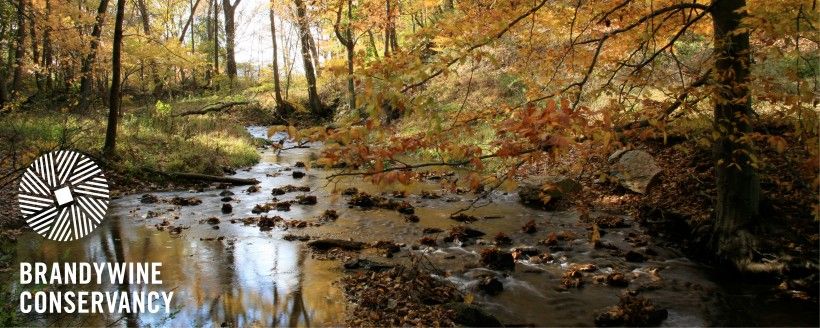
Director's Report
Dear fellow conservationists,
Welcome to the Fall 2020 edition of Environmental Currents, the Brandywine Conservancy’s quarterly newsletter.
As we are moving into autumn, I know many of you share my sentiment that this is a favorite time of year. The crisp air, the beauty of the changing leaves, warm welcoming foods and all things pumpkin!
In this edition of Environmental Currents, let’s walk together through many of the projects and programs of your Conservancy, from the beauty of Monarch Butterflies to the threat of spotted lanternflies; from celebrating a milestone TEN YEARS of the Brandywine Creek Greenway and the amazing collaboration that has created more sustainable and connected open spaces and outdoor recreation opportunities; and a look at ways for us to work together even further on Sustainable Community Assessments.
And, since the work of conservation—vast and multi-faceted that it is—can only be achieved through teamwork and partnership, we welcome you to read about the “new” Executive Director of the PA Fish and Boat Commission (PFBC), Tim Schaeffer. PFBC was a key player in the creation of the feasibility study for the Brandywine Creek Water Trail and we will certainly work collaboratively as the water trail progresses to maximize fulfillment of both of our missions!
Of course, we need to acknowledge the times we are in, but we should also acknowledge the enduring beauty and inspiration that is the end result of all of the work that the Conservancy has done and continues to accomplish with your support. Together, we’ve shaped so many great achievements in land and water conservation, stewardship, community sustainability, preserve management, outdoor recreation and cutting-edge ideas. It’s the balance.
I remain grateful to all of you for your support and assistance. Together, let’s forge ahead.
We at the Brandywine Conservancy wish you and yours continued health and happiness.
Ellen
Ellen M. Ferretti
Director, Brandywine Conservancy
A 10-year Look Back: The Brandywine Creek Greenway Celebrates Milestone Anniversary
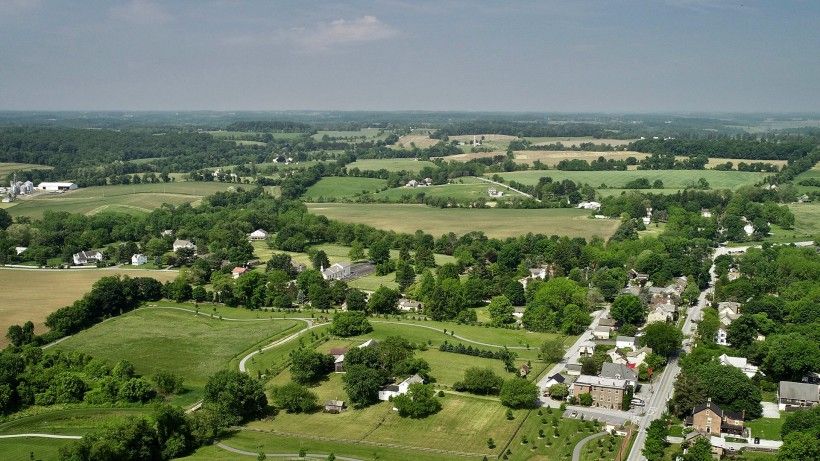
When the Brandywine Creek Greenway was conceived over 10 years ago, the vision of establishing a 40-mile long conservation and recreation corridor along both branches of the Brandywine River—from Honey Brook, Pennsylvania to the City of Wilmington, Delaware—seemed monumental. Now a decade later, the Greenway has achieved major milestones including new and improved access to open space, parks, trails, river access points and area attractions.
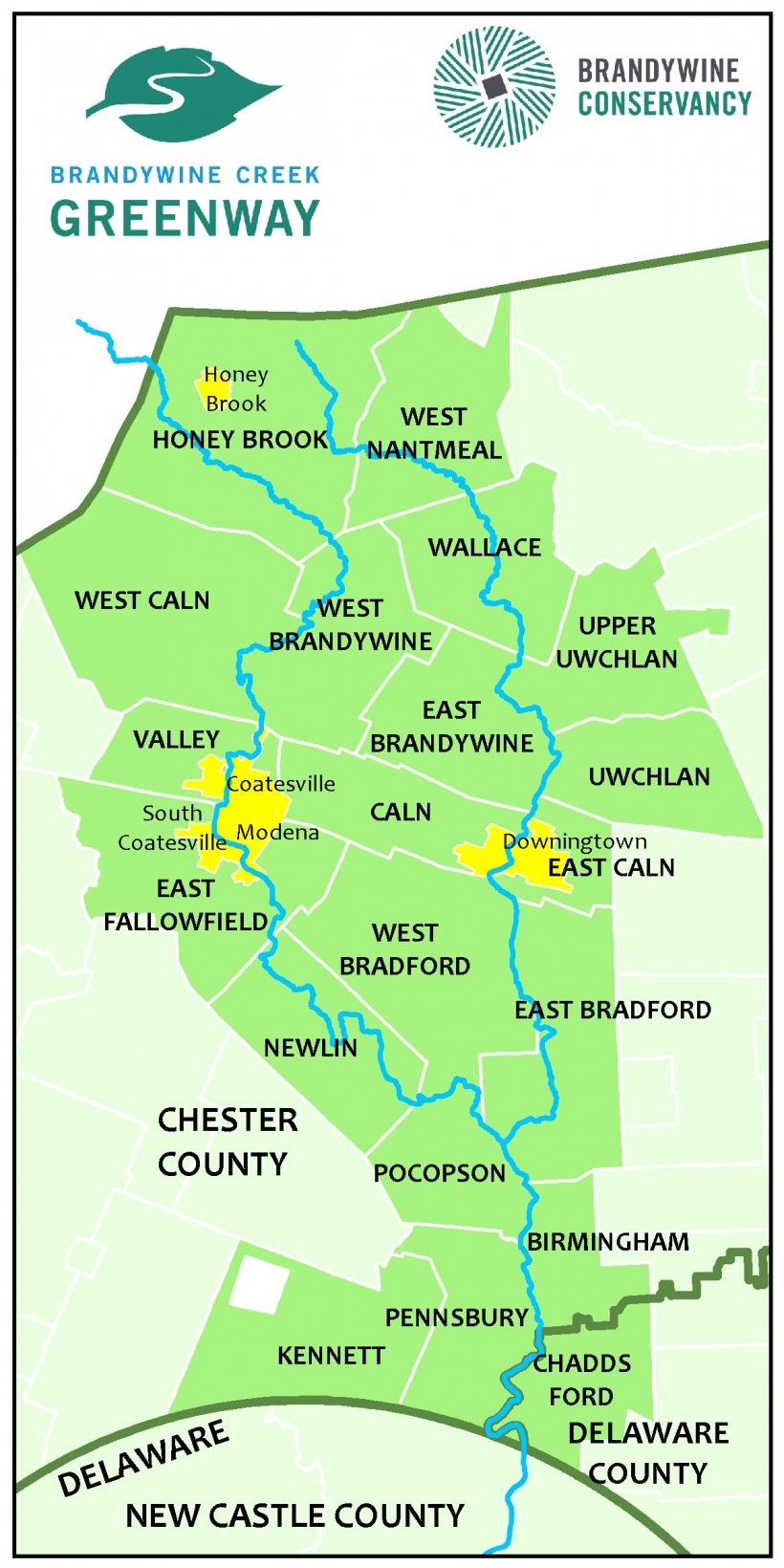
The Greenway represents the western-most line of Circuit Trails, the multi-modal trail network of the greater Philadelphia region. Since implementation of the Greenway Strategic Action Plan began in 2014, the Brandywine Conservancy has facilitated several studies that advance Circuit Trails including portions of the Brandywine Trail, the Northern Struble Trail and the Octoraro Trail. The Brandywine Trail creates a recreational spine along the Brandywine Creek going from Downingtown to Route 1 in Chadds Ford. In Downingtown, the Brandywine Trail connects to the Struble Trail which extends to Marsh Creek State Park and planned connections north to Honey Brook. In Chadds Ford, the Brandywine Trail meets the planned Octoraro Trail with connections east to Concord Township and beyond. In addition to land-based trails, the Brandywine Creek Water Trail is planned from Coatesville on the west branch of the Brandywine and Downingtown on the east branch, to Brandywine Creek State Park in New Castle County, Delaware.
While recreation and trail use is at the forefront of the Greenway work, the 2013 Brandywine Creek Greenway Concept Plan also focused on a suite of recommendations that directly supported the vision of the Greenway, including land conservation and farmland preservation, natural resource protection and water quality improvement, and cultural and historic preservation. As the Brandywine celebrates the 10-year anniversary of the Greenway, we look back on the significant headway that has been made on these complementary program achievements.
Increased Open Space
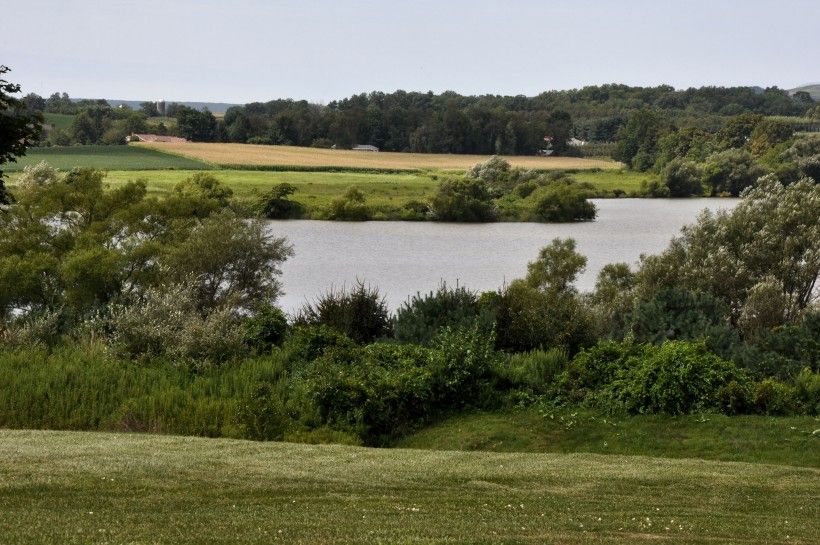
In 2010, about 49,000 acres were permanently protected by conservation easements, agricultural easements and acquisition of fee-owned land by public or non-profit entities. Today over 7,500 additional acres have been protected in the Greenway totaling over 56,500 acres.
Partner municipalities have passed open space referendums in support of increased preservation. The Pennsylvania Greenway municipalities now generate over $3.1 million per year for protection of private and public open space. For example, in 2017 West Bradford Township passed an open space ballot and have since added 3% to their preserved farm total, resulting in 23.2% of the Township permanently protected. West Bradford is not only committed to preserving open space, but also protecting and improving the Broad Run—an exceptional value watershed—that begins and ends almost exclusively in the Township.
Improving the Headwaters of the Brandywine
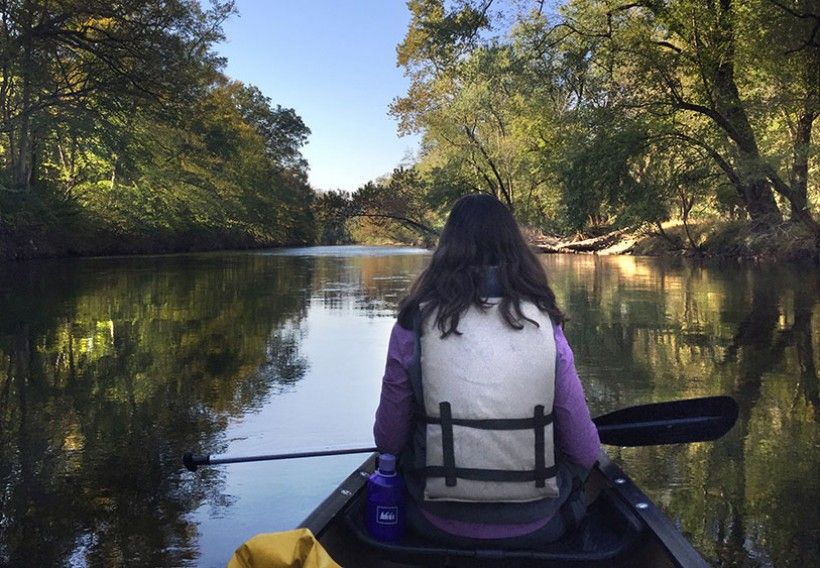
There has been significant investment in improving water quality at the headwaters of the Brandywine in Honey Brook Township. Since 2009, over $17.5 million has been leveraged to preserve farmland and improve water quality, including funding from the William Penn Foundation, City of Wilmington, National Fish and Wildlife Foundation (NFWF), Natural Resource and Conservation Service (NRCS), Pennsylvania’s Growing Greener program, Chester County and Honey Brook Township. These funds have assisted plain-sect dairy farmers in keeping and supporting their agricultural operations while improving environmental conditions for the community.
Protection of Cultural and Historic Resources and Surrounding Landscapes
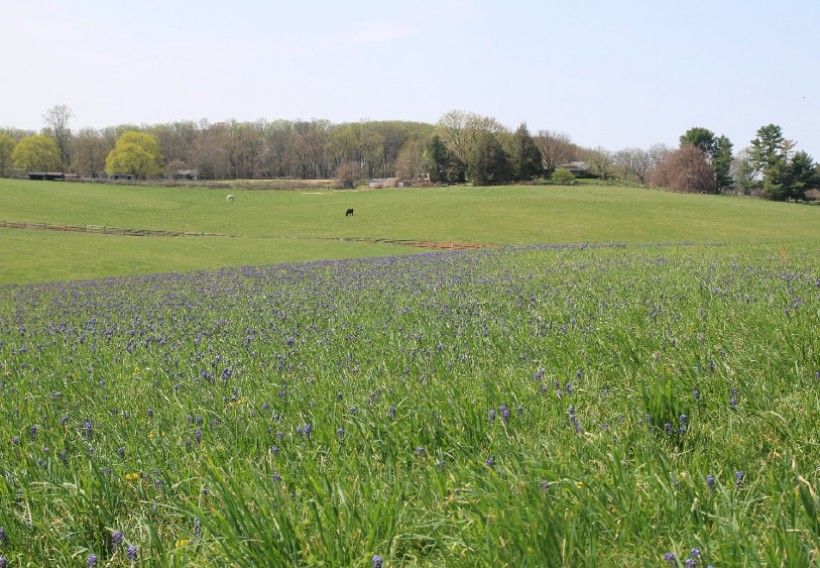
Sections of the Greenway are fortunate to house historic resources and landscapes that date back to the American Revolution. The Brandywine Battlefield Historic Landmark covers six municipalities in Chester and Delaware County, Pennsylvania, and four of those municipalities lie within the Greenway. Much of the Brandywine Battlefield preservation efforts, which have occurred over the past 30 years by both public and private entities, have provided a foundation to the work of the Greenway. In 2018, the Brandywine acquired the remainder of Birmingham Hill, a property located in Birmingham Township in the heart of the Brandywine Battlefield National Historic Landmark (NHL). Being the location of some of the heaviest fighting during the Battle, this key acquisition will forever protect this historic battleground and provide public access for passive recreation and interpretation.
In addition, the Brandywine Conservancy, Chester County and seven municipalities have partnered to prepare a Brandywine Battlefield Heritage Interpretation Plan that will identify thematic and physical heritage interpretation and connectivity opportunities between key historic sites with the Brandywine Battlefield NHL. Once completed, the report will promote public education, local small-scale heritage tourism and possible additional pedestrian connections.
Our partners from Honey Brook, Pennsylvania to Wilmington, Delaware are the most influential factors in the success of the Brandywine Creek Greenway. There are many local, county, private and non-profit partners who are instrumental in achieving the vision for the Greenway. Together we are a formidable alliance for acquiring new lands for parks, preserving private lands for conservation, implementing new trails and preserving historic assets.
In celebration of the 10-year anniversary, be on the lookout for a Brandywine Creek Greenway photo contest announcement in September 2020. All those who love the Brandywine will be encouraged to submit images of hiking, biking, paddling and exploring the peaceful and historic Brandywine Creek Greenway.
New: Brandywine Creek Greenway’s Mini-Grant Program for 2020-2021
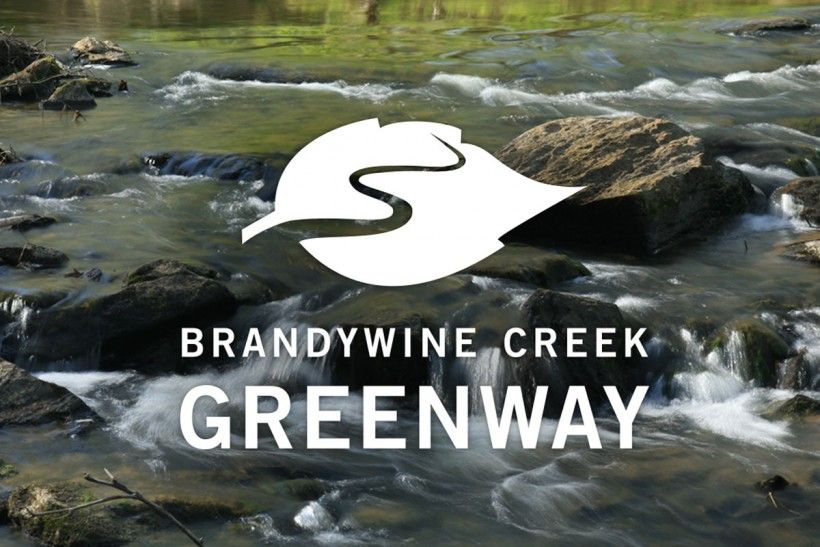
The Brandywine Conservancy is pleased to announce the launch of the Brandywine Creek Greenway’s new Mini-Grant Program for 2020-2021. The program is funded by a recent grant from the Pennsylvania DCNR Community Conservation Partnership Program Environmental Stewardship Fund, administered by the Bureau of Recreation and Conservation (BRC). With these funds, the Brandywine Conservancy will be able to grant awards of $2,000 to $10,000—up to a total of $40,000—to projects that will support and advance the goals and objectives of the Greenway’s Strategic Action Plan (2014). The grant funding round opened on July 30, 2020, with applications due by October 15, 2020.
The Mini-Grant Program will fund small projects that improve parks, open space and community trails, and will advance priority conservation and recreation projects identified in the Greenway's Strategic Action Plan, plus other publicly vetted municipal planning documents. Eligible applicants include Pennsylvania non-profit organizations with tax-exempt status 501(c)(3), municipalities, counties and some educational institutions. Please see the Greenway website for more information and to download the application materials.
Q&A with the Executive Director of the Pennsylvania Fish and Boat Commission
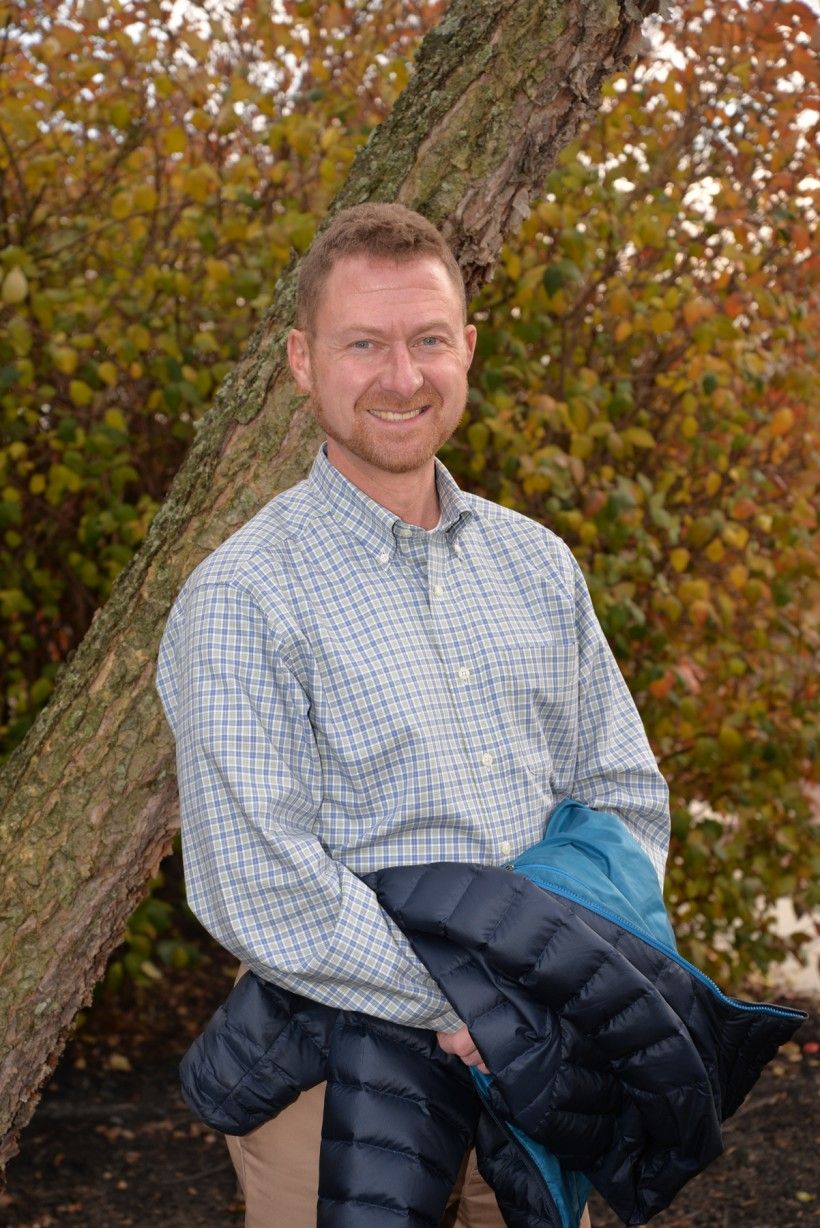
In the interview below, hear from Tim Schaeffer, Executive Director of the Pennsylvania Fish and Boat Commission (PFBC). A native of Cumberland County, Tim has dedicated his career to conservation. For a decade, Tim served as Director of Policy and Planning for the PFBC, and later assumed the duties of Executive Director in November 2018. Additionally, Tim has held leadership positions with the Pennsylvania Department of Environmental Protection and Audubon Pennsylvania. He is an active angler, boater and hunter with a passion for protecting and improving public access to Pennsylvania’s 86,000 miles of rivers, streams and lakes.
As you are relatively new in your role at the Commission, what are you most passionate about in regards to PFBC’s mission?
Our mission is to protect, conserve and enhance Pennsylvania’s aquatic resources and provide fishing and boating opportunities. As we wrap up a summer that has seen an incredible boom in the number of individuals of all ages fishing and boating in Pennsylvania and head into a fall during which many will continue to turn to their local waterways for recreation, I am very passionate about having people wear their lifejackets. As of this writing, there have been eight recreational boating fatalities in Pennsylvania in 2020, and none of the victims were wearing a lifejacket. We want people to have fun on the water, and we also want them to return safely after a day on the water.
What is your vision for the future of the PFBC and its interaction with outdoor recreational enthusiasts and Pennsylvania communities?
In July, our Board of Commissioners approved a new three-year strategic plan that will guide the agency’s activities through June 30, 2023. The plan begins with the following vision that was honed during a yearlong planning process: to establish Pennsylvania as a premier destination for fishing and boating and be the national leader in aquatic resource management. In fulfilling that vision, we developed eight guiding principles for the agency to consider when taking an action or making any decision.
- Commission Culture: Create a positive, diverse and cooperative work environment where staff and volunteers provide exceptional service, develop their expertise and are supported in their efforts.
- Safety: Maximize the safety of our staff, anglers and boaters, agency partners, and the public.
- Asset Stewardship: Prudently manage the agency’s finances, equipment, infrastructure and property.
- Resource First: Keep the health of the Commonwealth’s aquatic resources, along with the individuals and organizations who benefit from them, at the forefront of agency decisions and actions.
- Access: Provide and support public access to Pennsylvania waters.
- R3: Consider the impacts our decisions and actions have on the recruitment, retention and reactivation of anglers and boaters of all ages, abilities, cultures and interests.
- Resilience: Evaluate and proactively adapt to and mitigate the effects of climate change, invasive species and other environmental pressures on fishing, boating and aquatic resources.
- Relevance: Explain, promote and strengthen the relevance of our work.
What's your experience as it relates to Southeastern Pennsylvania and what opportunities and challenges do you see for that area?
Three years ago, in partnership with the Recreational Boating and Fishing Foundation (RBFF), we launched the Gaun First Catch Center through the generosity of the Samuel Gaun estate. The Gaun First Catch Center provides opportunities to learn about fishing or improve existing skills in Bucks, Chester, Delaware, Montgomery and Philadelphia counties. We feel that this area is worth the time and focus because it is rich with waterways to enjoy, yet statistics show that while a third of Pennsylvania’s population lives in that area, only about 11% of fishing licenses sold statewide come from there. If there are barriers to introducing those Pennsylvanians to fishing and boating, we want to work extra hard to break the barriers, because we know how beneficial fishing and boating can be for families and communities.
With regard to the Brandywine Creek Greenway and the Brandywine Creek Water Trail, where do you see synergy and partnership opportunities between the PFBC, the Brandywine Conservancy and other municipal partners within the Greenway?
We were happy to be a part of the team that worked on the recently completed Brandywine Creek Water Trail Feasibility Study and look forward to playing a role in its implementation. The Fish and Boat Commission recently brought back our popular Boating Facilities Grant program, and we encourage municipalities and other landowners in the watershed to apply for assistance to develop new and improve existing access points to connect paddlers to this regional gem. At the same time, we would like to work with the Conservancy on promoting safe boating messages among the unprecedented number of people who have discovered the creek.
Anything else you would like to share?
Two of the guiding principles listed above are “Resource First” and “Relevance.” While they were identified as a filter for implementing our own agency’s plan, they apply just as readily to the work of the Brandywine Conservancy as it protects and conserves the land, water, natural and cultural resources of the Brandywine-Christina watershed. We extend our thanks to the Conservancy for keeping the health of its local watershed at the forefront of everything it does and for explaining and promoting the relevance of that work to those who live, work and play in Southeastern Pennsylvania.
Sustainable Community Assessment Tool
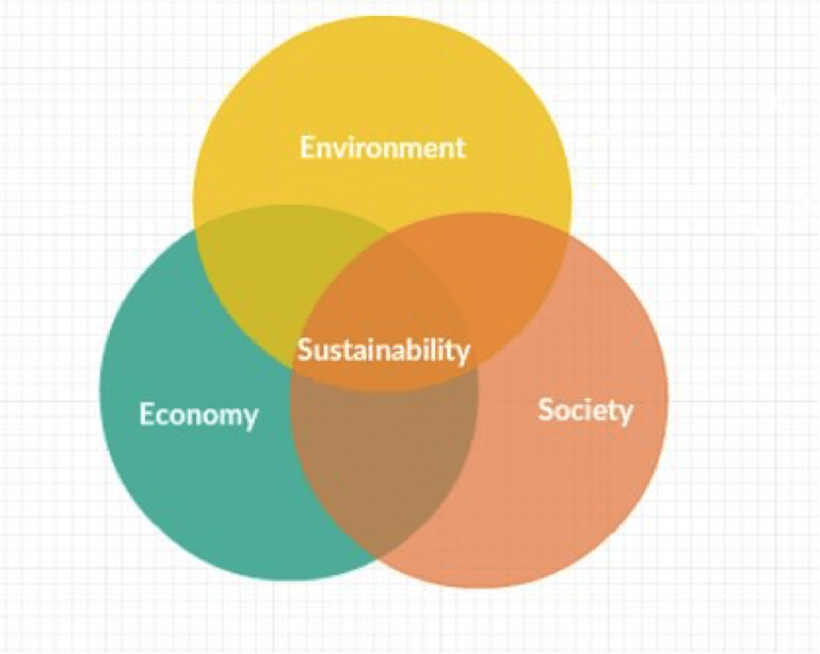
Is your municipality looking to become more “green?” The Sustainable Community Assessment (SCA) is a tool that Brandywine Conservancy developed approximately a decade ago to assist rural and suburban Pennsylvania municipalities in prioritizing sustainability-related goals and actions. Sustainability is often referred to as a three-legged stool which seeks to balance economic, environmental, and societal contributions and possible mitigation measures to sustainability. With over 50 years of experience working to protect and improve our local environment, the Conservancy’s assessment is mainly focused on the environmental aspects of sustainability (clean air, clean water and clean soil). We also believe that the interconnected nature of these issues means that the technical solutions our assessment proposes have the potential to impact the economic and societal issues of sustainability.
The SCA focuses on existing municipal policies and plans but does not address municipal buying practices or operations. In focusing on existing local government law and planning, the Conservancy believes that future development and planning can be positively impacted to address a municipality’s goals for its future. A municipality may choose to undertake an SCA at the start of its comprehensive plan update or before amending its ordinances to help frame possible disconnects between municipal vision versus existing codes.
The Brandywine Conservancy’s Sustainable Community Assessment tool focuses on the following eight major topic areas of sustainability:
- Natural Resource Protection
- Water Quality and Quantity
- Land Use and Community Character
- Climate Resiliency
- Alternative Energy and Energy Conservation
- Mobility and Transportation
- Community Health and Safety
- Food Production and Security
The SCA tool is able to organize these eight diverse subject areas into a single document to help a municipality recognize past municipal actions that may have positively contributed to a more sustainable future. It can also help a municipality or region identify, and prioritize, steps they and their constituents (residents, business owners, others) can take in becoming more sustainable.
To begin its assessment, Conservancy staff undertakes a detailed technical review of a municipality’s planning documents and regulations, including its comprehensive plan, zoning ordinance, subdivision and land development ordinance, stormwater management ordinance, a current Act 537 sewage facilities plan, a township hazard mitigation plan (if existing), Act 209 capital improvement plan, open space and trail plans, and other relevant township documents.
After reviewing these municipal documents, Conservancy staff will identify: a) any existing sustainability-related goals, policies, or regulations and evaluate whether they present opportunities or obstacles for furthering the township’s sustainability efforts; b) if any potential incentives or standards can be incorporated into such policies and regulations, as needed to enhance community sustainability. The draft SCA is then presented to the municipal committee that serves as the advisory body for the study.
After reviewing the draft study and receiving municipal comment, the Conservancy revises and releases the final report, which also often involves a presentation to a municipality’s elected officials. The entire process can be completed in two to three months and costs under $10,000 in Conservancy staff time. Chester County municipalities can subsidize the cost of the SCA by applying for a Chester County Vision Partnership Program Grant.
As a project that requires a small budget, amount of time, and level of municipal input, an SCA can yield meaningful change for a community over time. A community with an SCA may have an updated “future vision” for a municipality or region that is sustainability-driven; or incorporate an energy element or weave sustainability and climate change issues into its new comprehensive plan, as permitted by the Pennsylvania Municipalities Planning Code; or lead to appropriate regulatory ordinance amendments (zoning and SALDO) that accommodate, or even create incentives for, sustainable actions of private individuals, government agencies and businesses.
For more information about this tool or to schedule a presentation about the SCA for your municipality, please contact Meredith Mayer, Associate Planner, at [email protected].
Sample Forestry/Timber Harvest Regulations For Municipalities Now Available
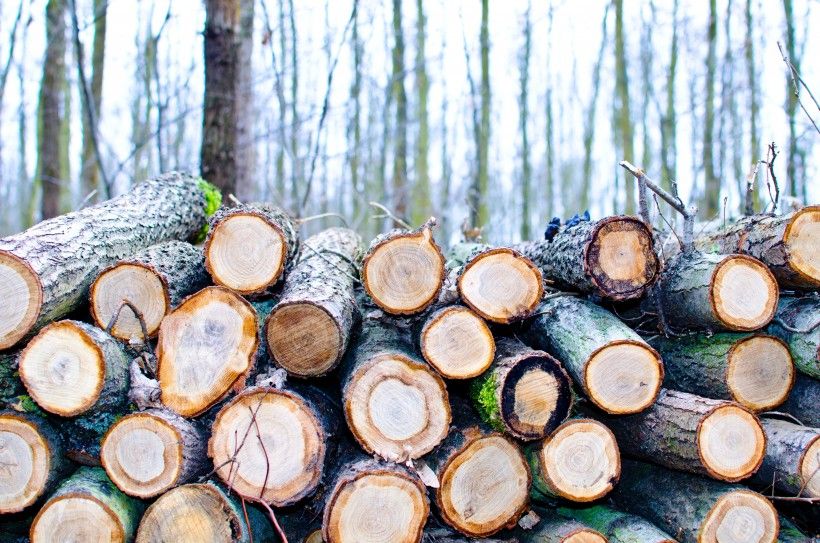
Compared to other parts of the state, southeastern Pennsylvania does not have extensive forests and active industrial-scale logging, but timber harvests still occur in our wooded areas. When such harvests occur, municipal staff and/or officials may hear from neighboring residents with complaints about the noise, concerns with the unsightliness of the landscape, or worrying about newly exposed soils and the potential for stormwater runoff and impact to waterways from future storms.
Pennsylvania’s planning law, the Municipalities Planning Code (MPC), states that all municipalities that have enacted zoning ordinances must permit forestry activities, including timber harvests, by-right in all zoning districts. Many municipalities in our region have, in general, attempted to strengthen their zoning and other ordinances in a way that avoids—or at least mitigates—anticipated community and environmental impacts of this use.
Because forestry, or silviculture, is a form of agriculture in Pennsylvania, a few municipalities in Chester County have run afoul of the Pennsylvania Agriculture, Community and Rural Environment Act (ACRE). Relying on the authority of ACRE, the state Office of Attorney General has determined that some municipal timber harvest regulations are excessive, unreasonable or duplicative of state laws, and therefore are “unauthorized.”
The Brandywine Conservancy has a long-standing interest in helping our region’s municipalities develop innovative and effective zoning, subdivision and stormwater ordinances. Consequently, our Municipal Assistance Program (MAP) planners have developed new sample zoning ordinance provisions for forestry activities, including timber harvests. We were extremely fortunate to have the input of many different Pennsylvania stakeholders in forestry activities, including PA DCNR’s Bureau of Forestry, PA Department of Agriculture, and the Office of Attorney General (OAG), in developing these sample zoning ordinance provisions. For example, through constructive dialogue with the OAG, we were able to produce sample forestry/timber harvest provisions for a municipal zoning ordinance with a clearer understanding of the limitations imposed by ACRE and the MPC, and with inclusion of several defined terms already established by the OAG. Our sample forestry/timber harvest provisions establish a zoning permit approval process that includes the required submittal of a timber harvest plan prepared by a professional forester, minimum standards for environmental protection, and a set of defined terms.
The Brandywine Conservancy’s sample forestry/timber harvest provisions for a zoning ordinance are not the only ones available for consideration by Pennsylvania municipalities. The Pennsylvania Model Forestry Ordinance offered by the Penn State Extension Program is another option and is designed as a stand-alone ordinance. If your municipality is interested in learning more about our sample forestry/timber harvest provisions, or other growth management and resource-related sample ordinance provisions, please contact [email protected] for more information.
Brandywine Conservancy releases final feasibility study for the Brandywine Creek Water Trail
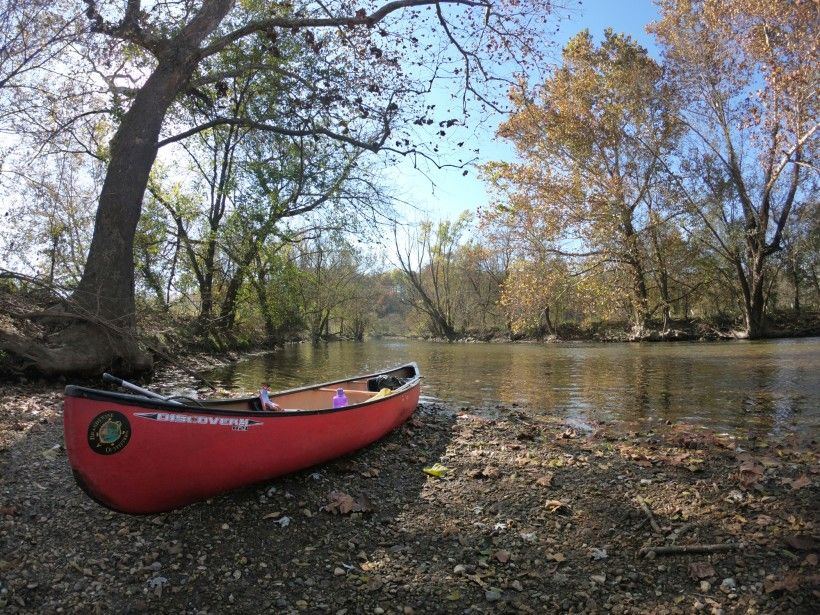
The Brandywine Conservancy, in partnership with the Chester County Planning Commission, is excited to announce the completion of the Brandywine Creek Water Trail feasibility study. A part of the Brandywine Creek Greenway initiative, this study outlines recommendations for a formalized route along the Brandywine Creek for recreational use, enhanced by connections to land trails.
Focusing on the east and west branches of the Brandywine, the Water Trail project encompasses Coatesville and Downingtown in Pennsylvania, stretching to the Brandywine Creek State Park in Delaware. Recommendations include improving safe public access and put-in locations with proper amenities; creating wayfinding signage and a water trail map; and establishing an online presence to promote the Water Trail, including sharing important updates or safety concerns with users, good stewardship practices, and reminders to respect and avoid privately owned property unless formal permission is granted by landowners. The final report containing a complete list of recommendations can be found at: www.brandywine.org/water-trail
“We are truly grateful to our partners at the Chester County Planning Commission and the many institutions who lent their expertise and guidance on this project,” noted Ellen Ferretti, Director of the Brandywine Conservancy. “Working together, we look forward to the next phase of implementing key aspects of the Brandywine Creek Water Trail to provide safe and sustainable access to the creek; identification of issues related to privately owned property versus public access along the creek; and sound guidance for creek users.”
“A partnership between the Chester County Planning Commission and the Brandywine Conservancy made perfect sense for this project,” said Brian O’Leary, Executive Director of the Chester County Planning Commission. “The Brandywine Creek is a wonderful resource for many of our local residents, and we want to continue to enhance stewardship and promote proper use of our waterways.”
Once complete, the Brandywine Creek Water Trail will be a 22-mile water route that connects communities to the creek in Pennsylvania and Delaware, improving access to the waterway for responsible recreational and educational use, while also protecting and enhancing the natural, scenic, cultural and historic resources along the river.
“We applaud the Brandywine Conservancy and the Chester County Planning Commission for their hard work in preparing this Water Trail feasibility study for Brandywine Creek,” said Tim Schaeffer, Executive Director of the Pennsylvania Fish and Boat Commission. “Our agency’s mission is enhanced by the collaborative effort of these key partners and the implementation of the study’s recommendations over the coming years. The Brandywine is a cherished aquatic recreational resource in southeastern Pennsylvania, and this study will help lay the foundation upon which to sustain that for future generations of users.”
This project was financed in part by funding from the William Penn Foundation to the Brandywine Creek Greenway. The Chester County Planning Commission also contributed in-kind staff time for this project. The project was guided by a Study Advisory Committee that included representatives from a variety of institutions and partners, including municipal employees and officials; local non-profit scientific institutions and land trusts; County Emergency Services; natural resource based State agencies from both Pennsylvania and Delaware; the National Park Service; and local canoeing and kayaking outfitters. Two open houses and an online survey were conducted to gather public feedback on current routes that are in use; areas that are unsafe and need improvement; sites where additional access would be helpful; and opportunities for stewardship and education.
Invasive Species Spotlight: An Update on the Spotted Lanternfly
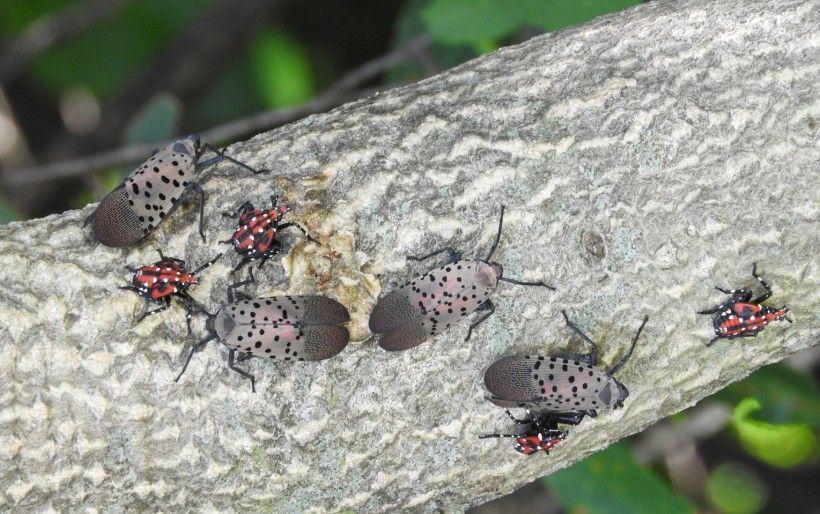
In 2020 alone, the spotted lanternfly have spread to 12 new counties, bringing the total to 26 Pennsylvania counties. Spotted lanternfly have also crossed state lines making their way into Delaware, New Jersey, Maryland, Virginia and West Virginia. In this update on the spotted lanternfly, learn about some control methods to slow its spread.
GreenWeaver Landscapes provides much needed assistance to riparian buffer planting along Harvey Run

A series of summer storms and subsequent flooding along Harvey Run on the Brandywine’s campus in Chadds Ford resulted in a significant impact on the 1,500 trees that have been previously planted in the area over the past five years. Native trees planted along waterways (known as a riparian buffer) provide critical protection and benefits for water quality, as well as improved wildlife habitat, both in-stream and along the stream corridor. High and fast flood waters, along with the debris they carry, can topple young trees and their protective tubes, endangering their long-term survival.
As a result of a successful PPP grant application, GreenWeaver Landscapes was able to offer the Brandywine Conservancy a full-day of five volunteer staff members to undertake stewardship work on our campus. An environmentally conscious landscape company based out of Media, PA, GreenWeaver Landscapes focuses on creative residential and commercial landscape solutions that help mitigate stormwater issues and promote the use of beneficial native plants.
Given the recent storms and damage to our planting along Harvey Run, GreenWeaver’s generous offer could not have been more timely or appreciated. The hardworking crew of five spent a beautiful summer day righting and re-staking scores of trees, as well as removing tubes from those trees that have either outgrown them or have not survived. This critical work ensures the continued development of a healthy riparian buffer along Harvey Run and its namesake trail along the Brandywine’s campus grounds.
“Woman of the Watershed” awarded to the Brandywine’s Melissa Reckner in PennFuture’s 2020 Women In Conservation Awards
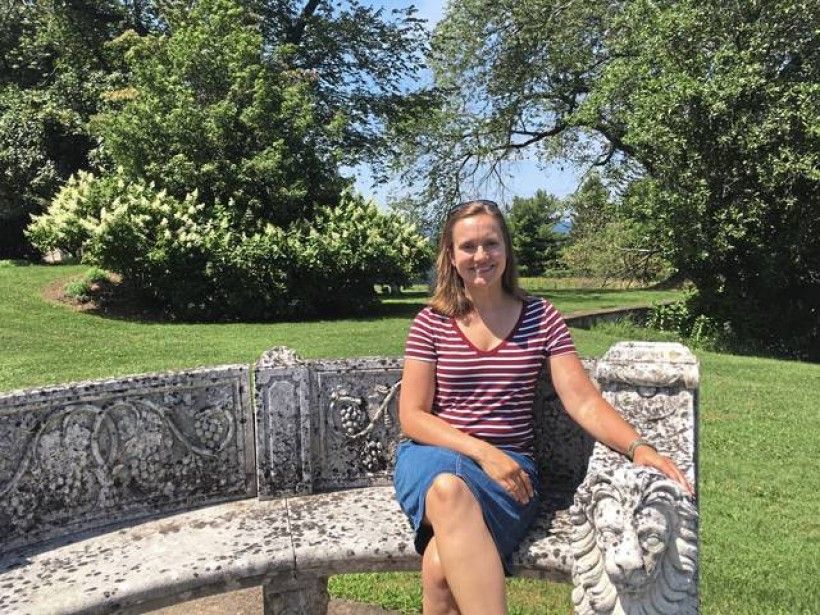
The Brandywine Conservancy’s Penguin Court Preserve program manager, Melissa Reckner, was recently selected to receive this year’s “Woman of the Watershed” award at the 2020 Women In Conservation Awards hosted by PennFuture.
Each year the Women In Conservation Awards recognize women from different regions of Pennsylvania. The awards are designed to encourage continuing excellence in conservation and to forge a stronger network of exceptional women working to protect Pennsylvania’s environment. This year, on October 8, PennFuture will recognize the honorees at a special virtual event.
Tickets are now available to attend this special event to honor these Women in Conservation. Click Here for more information.
On the Blog: Wild vs Rearer Monarchs
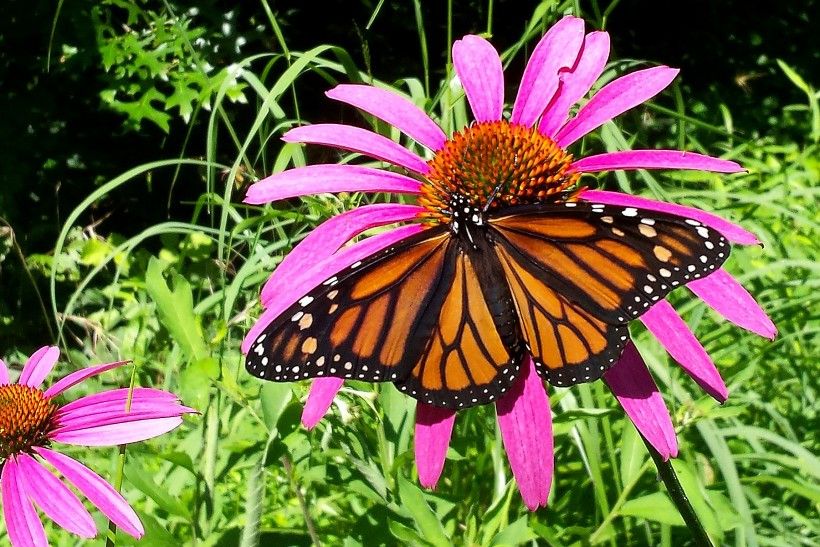
Monarchs are symbolic in their flight and fight for survival against habitat loss, pesticide use and climate change. Some people raise monarchs in the hopes of helping their populations, but is that causing more harm than good?